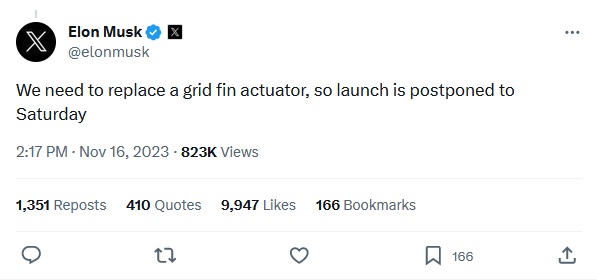If you're in the northern tier of the US, you might want to keep an eye out for
possible aurora displays tonight (late on 11/30 into 12/1) and into tomorrow
night (12/1 into 12/2).
According to SpaceWeather.com reporting from NOAA, a cannibal CME is going
to impact Earth on December 1. As I write this it's already December 1 by Universal Time (UTC) and
there's no sign of anything by the
planetary K index, which is currently 0.33. More on that later.
A CANNIBAL CME IS COMING: NOAA models confirm that a Cannibal CME will strike our planet on Dec. 1st. Cannibal CMEs form when a fast CME sweeps up a slower CME ahead of it. The combination contains intense, tangled magnetic fields that can do a good job sparking auroras when they reach Earth. If a Cannibal CME strikes Earth on Dec. 1st, as predicted, geomagnetic storm levels could reach category G3 (Strong). Aurora alerts: SMS Text
Space.com described it with a bit more detail.
The rapid Earth-bound CME left the sun on Nov. 29 during a powerful M9.8-class solar flare eruption. But it isn't alone. The speedy plasma outburst will merge with several slower upstream CMEs that left the sun a day earlier (Nov. 28), creating a "Cannibal CME" that will likely trigger a strong geomagnetic storm akin to a Nov. 5 event that supercharged auroras and STEVE around the world.
Since I've personally farted more energy than an M9.8 class flare, I have hard time thinking of a flare that isn't X-class as "powerful," although M9.8 is only 0.2 units lower than an X1.0 flare. I don't think of X1 flares as particularly powerful, either.
About the timing, though, NOAA also posts video created by a model that shows the progress of the CME. I ran the video and hit the stop button at the time when it appears to hit maximum impact to Earth. It appears to be around 12:00 UTC or 7:00 AM EST tomorrow. The peak plasma density, though, is earlier: 7:00 UTC or 2:00 AM EST. The west coast and western states may well be better-placed for this CME impact than farther east.
NOAA is forecasting a geomagnetic storm which could reach G3 category, classified as a "strong" storm, that could cause radio blackouts throughout the HF radio spectrum on the sunlit side of the Earth for hours at a time.
All sites covering the possible storm point out that we had a G3 storm back on November 5th, accompanied by gorgeous aurora displays. We don't get to see auroras this far south unless the geomagnetic storm is just below TEOTWAWKI levels, but my memory of that G3 storm will be forever linked to what I wrote about a week later, having radio contact with ("working") Hawaii on the 50 MHz band. Which is just slightly below what used to be TV VHF channel 2 in the days before digital HDTV. (Kids, ask your parents or grandparents)
What will this CME impact do? We have even less data and experience to base forecasts on with space weather that we have everyday rain/sun type weather. That said, here's the NOAA forecast. All I can say is the closer you are to the green or red areas you are, the better your chances of seeing something.























